The Inner Planets
The inner planets are Mercury, Venus, Earth and Mars. These are the four planets closest to the Sun. They are sometimes called the terrestrial planets because they all have solid surfaces.
The inner planets are different to each other in many ways but they do share some similarities. They are all small when compared with the size of the outer planets. Mercury and Venus have no moons, while Earth only has one and Mars just has two. They are also quite close to each other. And as they are also fairly close to the Sun, they travel around it quite quickly. The diagram below shows the orbits of the inner planets.
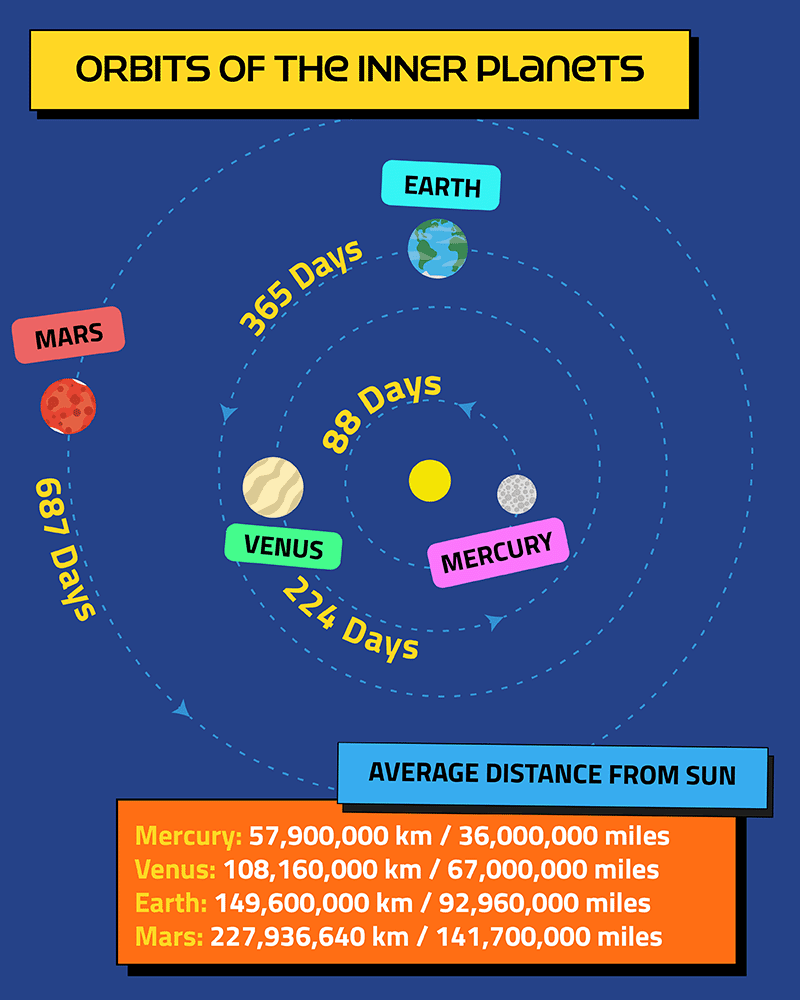
Want to know more about the inner planets? Read on as we give you some nuggets of information about them! And if you want even bigger nuggets, you can click through to visit the planet itself.
Mercury is the smallest of all of the eight regular planets in the Solar System. It has a cratered surface resembling that of Earth's Moon, and not a great deal of atmosphere. Not the kind of place you'd like to take your family out for lunch. As the closest planet to the Sun, temperatures reach a scorching 427 °C (800 °F), but over on the side away from the Sun, it's a mighty chilly -183 °C (-297 °F). Most definitely scarf and gloves weather. Some of Mercury's craters never ever see sunlight, but spacecraft that have been sent to observe Mercury have discovered that lurking within these craters is frozen water. Mercury whizzes around the Sun, taking only 88 days to get around it. Mercury has no moons.
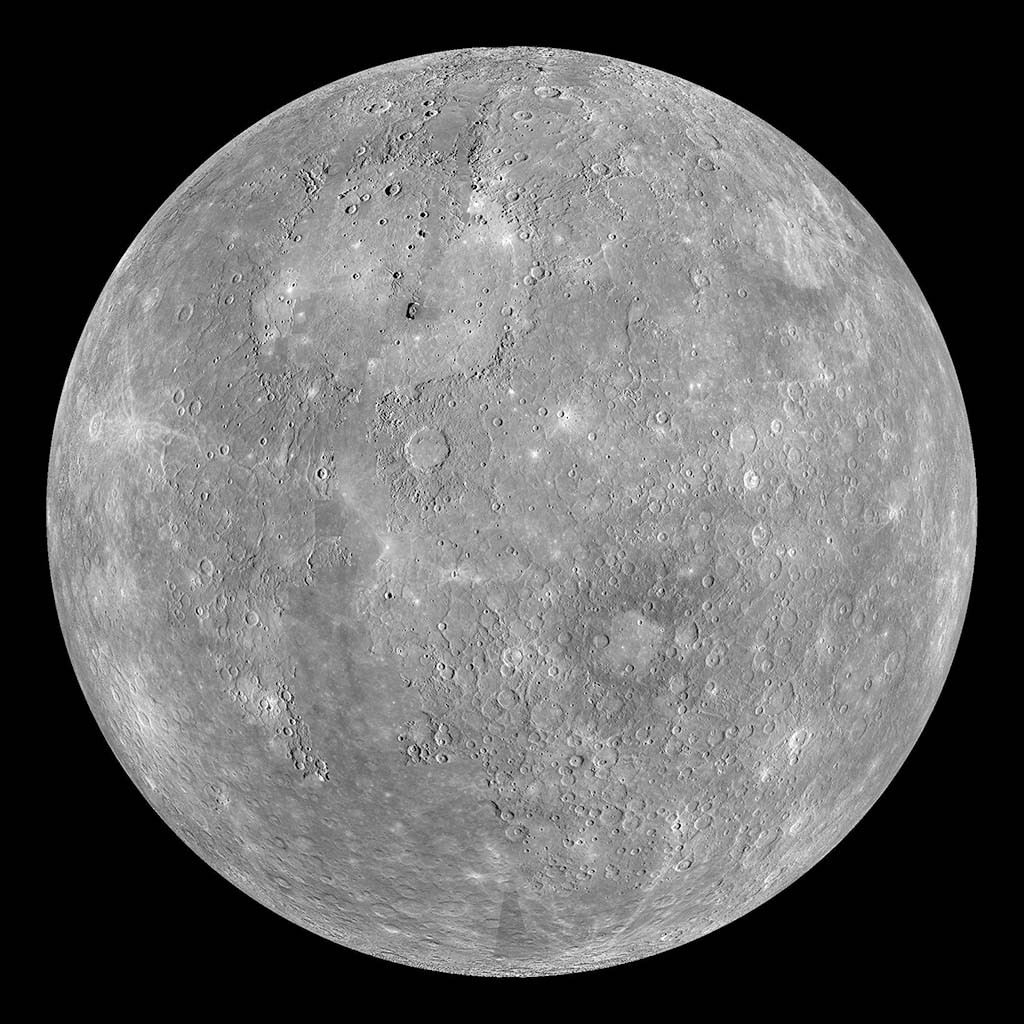
Venus is the second closest planet to the Sun and the sixth largest of all of the Solar System's planets. It is the brightest object in the sky after the Sun and the Moon, appearing to be a beautiful and tranquil world from a distance. Some have even believed it to be Earth's twin.
Get up close if you dare, and you'll discover that Venus has deadly clouds of sulphuric acid, a suffocating atmosphere of carbon dioxide, a surface of volcanic ruins, and excrutiating temperatures of 480 °C (896 °F). All day, every day. Interestingly though, Venus's day is longer than its year, with the planet taking 243 days to turn once on its axis, but 224 days to complete an orbit of the Sun. Like Mercury, Venus travels alone and has no moons orbiting it.
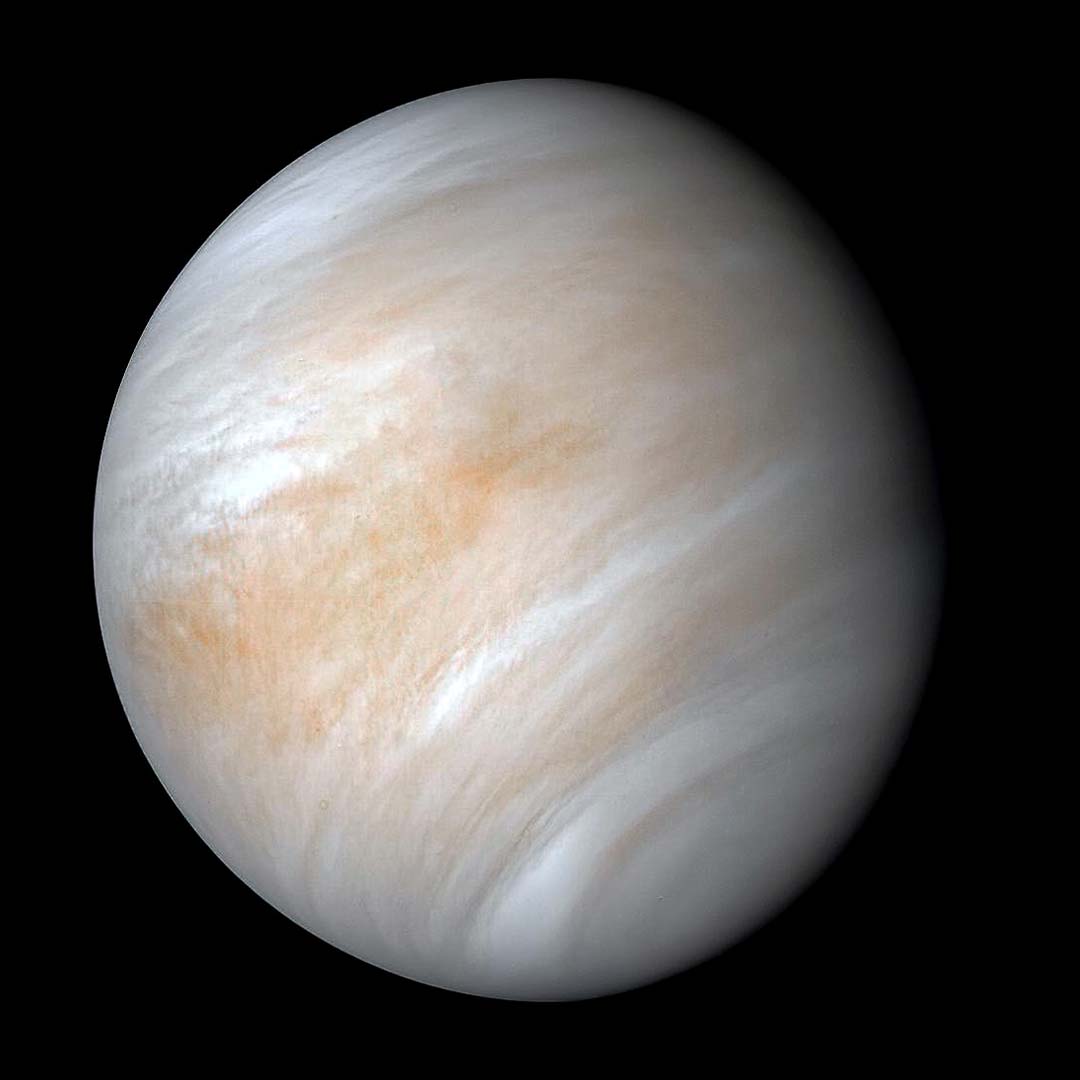
Earth is the largest of the inner planets, and fifth largest of all of the Solar System's planets. It's a special world, being the only place in the Solar System where life is known to exist. It is your home planet. 70% of Earth's surface is covered in water, and its atmosphere contains oxygen which is essential for the survival of many lifeforms, humans included. Earth is situated in what is referred to as the Goldilocks Zone. It is just the right distance away from the Sun that it isn't too hot and it isn't too cold, so the planet's climate and conditions are ideal for the ongoing presence and evolution of life.
For a long time, dinosaurs were the dominant species on Earth, surviving on the planet for about 150 million years before they were wiped out, possibly by the collision of a large asteroid with Earth. Nowadays, human beings share Earth with countless other species of life, which exist in the seas, in the sky, underground, overground. As Earth takes its 365 day long trip around the Sun, it is kept company by one moon. Known by most as the Moon, it is the only other surface in the Solar System that has been stepped on by human beings. 12 astronauts visited it during six Apollo missions in the late 1960s and early 1970s.
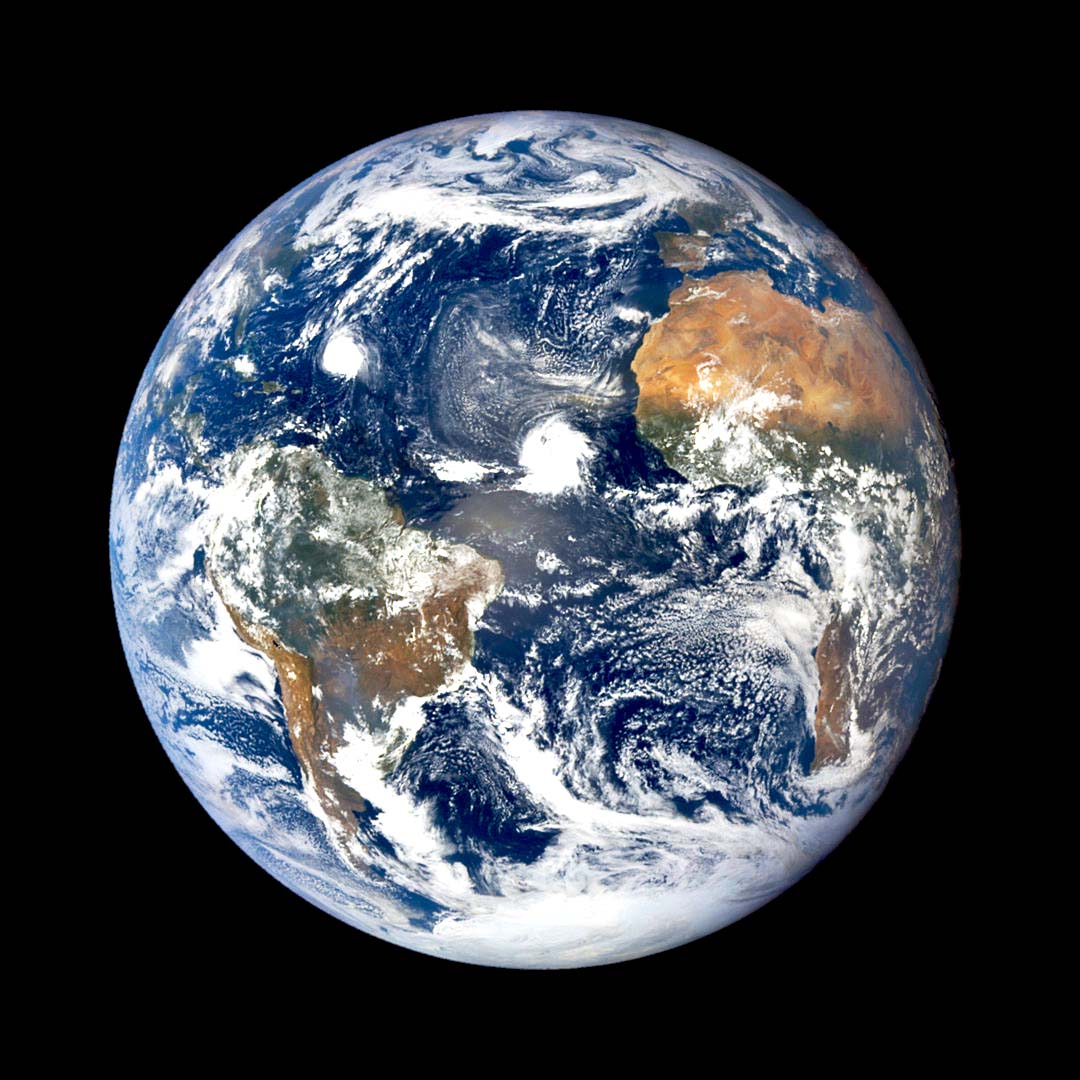
Mars is the final of the four inner planets and the second smallest of all planets. It is about a quarter of the size of Earth and is a popular destination for uncrewed space missions from Earth. This is because it it's quite close to Earth and it's possible that life could survive on it, either now or sometime in its dark and distant past. Water did once flow freely on Mars and volcanoes once erupted happily there too. That's not to say that Mars is an ideal holiday destination. Its average surface temperature is -63 °C (-81 °F), and its atmosphere is mostly carbon dioxide, which most Earth-based lifeforms don't particularly like to breathe in. Despite this, Mars is undoubtedly next in the list of places that humans will visit in the Solar System. When this will happen, nobody knows, but it will happen one day.
Mars has a red surface and pink skies, and can easily be observed from Earth. Mars takes 687 to complete an orbit of the Sun, and has two small moons orbiting it. These moons are named Phobos and Deimos.
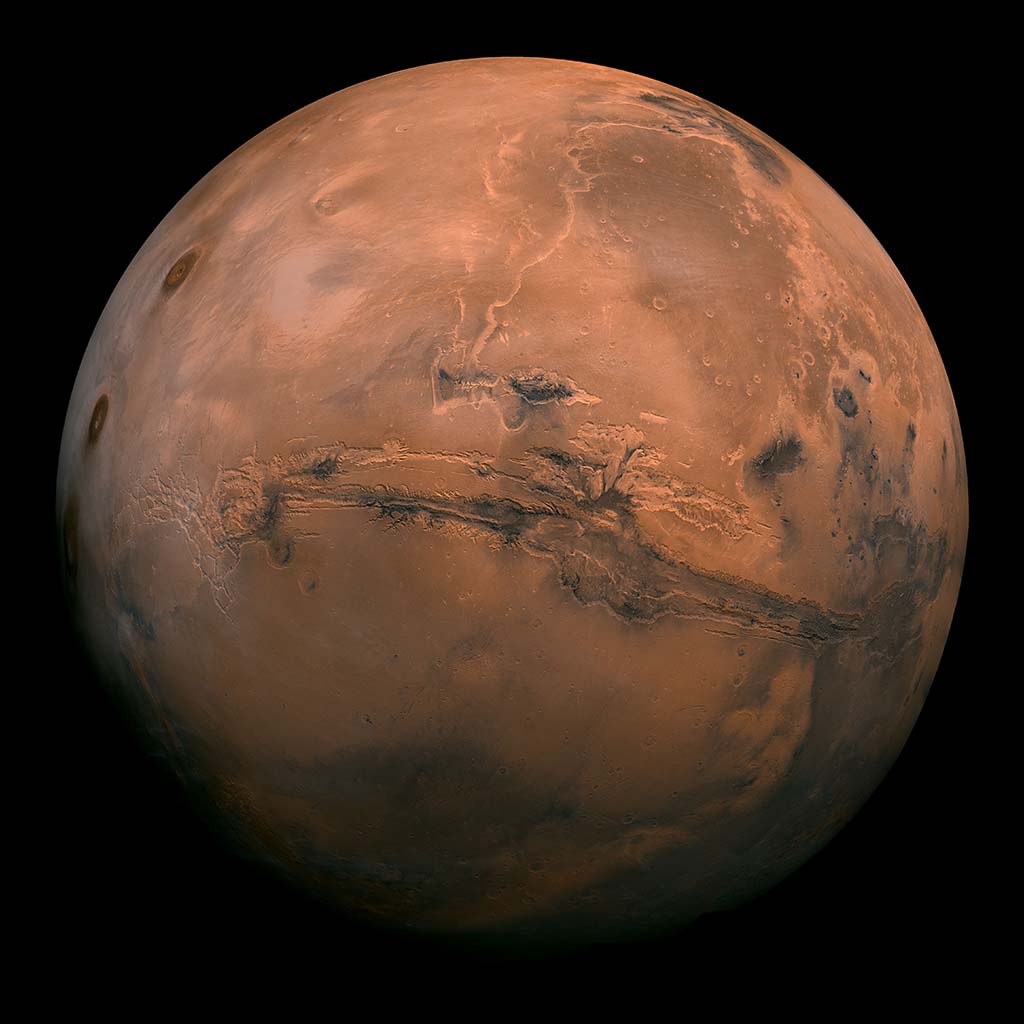
Beyond the Inner Planets
Separating the inner planets from the outer planets is the Asteroid Belt. This is a region full of thousands of rocks called asteroids. Most are irregularly-shaped although some are large enough to be spherical. The largest object in that region is a dwarf planet called Ceres.
After crossing the Asteroid Belt, we enter the domain of the gas giants. These are the outer planets - Jupiter, Saturn, Uranus and Neptune. These huge worlds are the largest planets in the Solar System.
| Average Distance from Sun | Diameter | Time to Spin on Axis (a day) |
Time to Orbit Sun (a year) |
Average Temperature | Contents of Atmosphere | |
|---|---|---|---|---|---|---|
| Mercury | 57,909,000 km
35,982,973 miles |
4,879 km 3,032 miles |
59 days | 88 days | -180 °C to 430 ° C -290 °F to 800 °F |
Trace amounts of Sodium and Magnesium | Venus | 108,209,000 km
67,237,935 miles |
12,104 km 7,521 miles |
243 days | 224 days | 471 °C 880 °F |
Carbon Dioxide (96%), Nitrogen (3.5%) | Earth | 149,596,000 km
92,954,616 miles |
12,742 km 7,918 miles |
23 hours, 56 mins | 365.25 days | 16 °C 61 °F |
Nitrogen (77%), Oxygen (21%), Argon (0.93%) | Mars | 227,923,000 km
141,624,742 miles |
6,779 km 4,212 miles |
24 hours, 40 mins | 687 days | -65 °C -85 °F |
Carbon Dioxide (95%), Argon |





